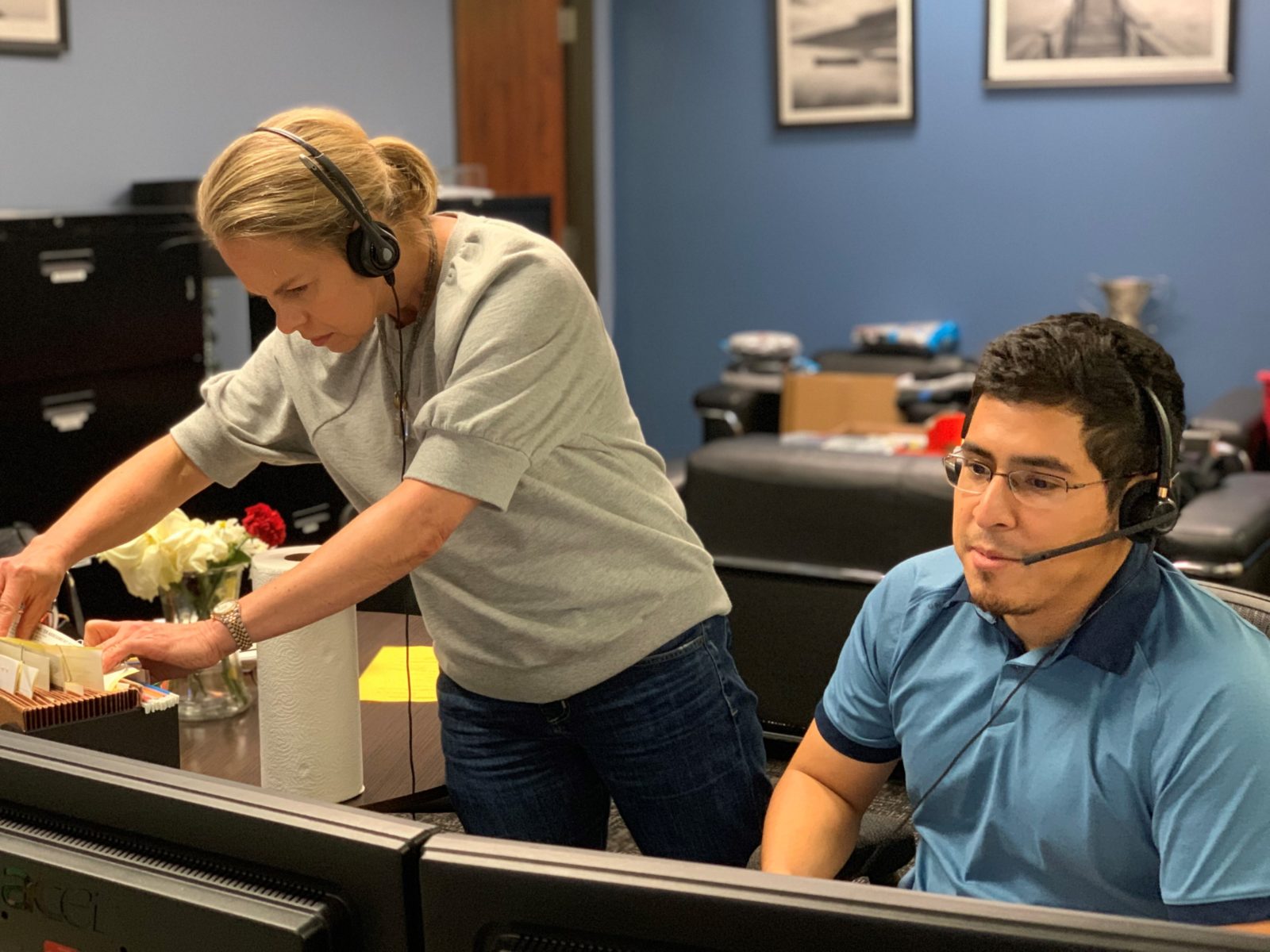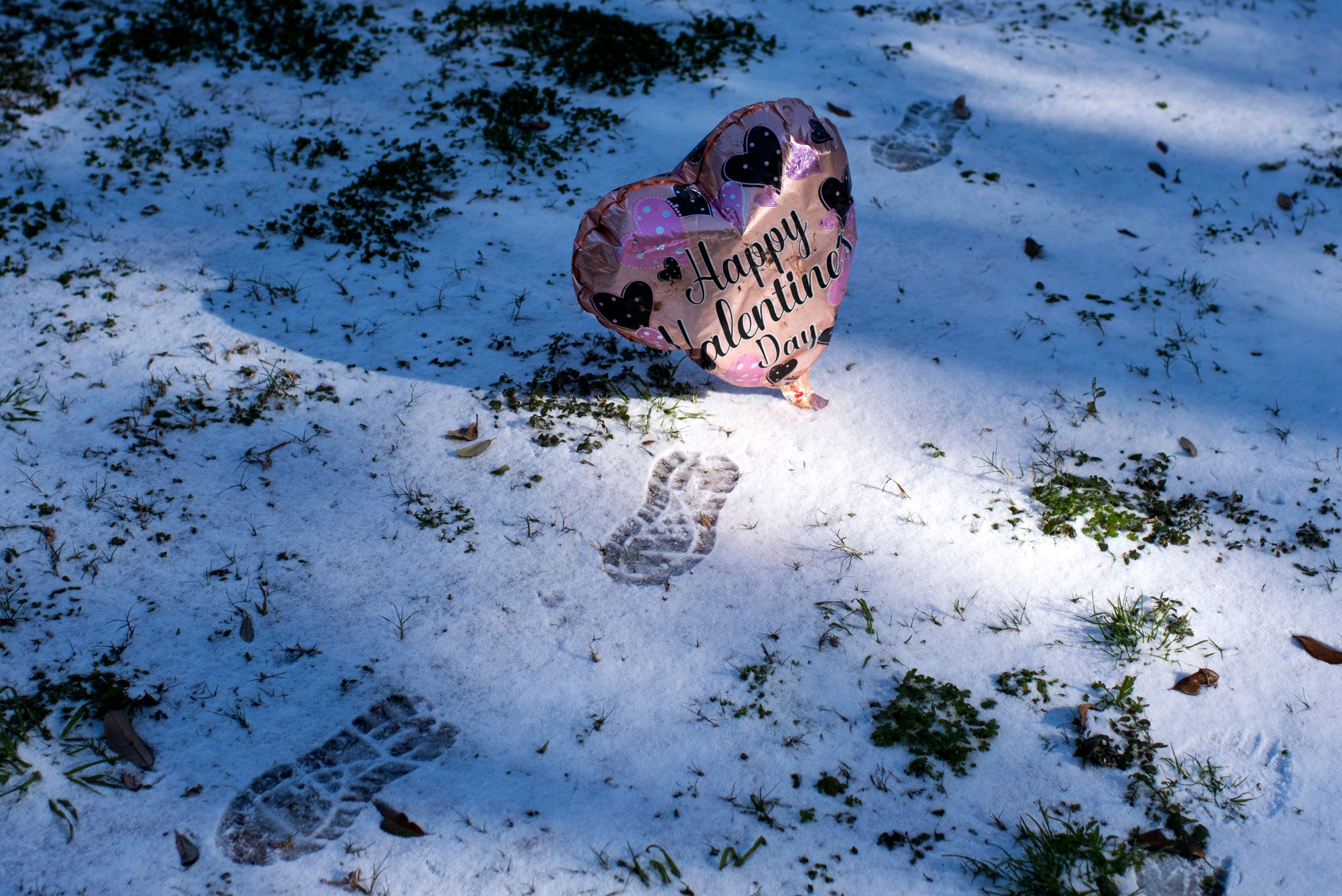When a winter storm paralyzed Texas last month, millions of people in the state were left without power or heat or drinkable water. Traveling was dangerous and cell service was spotty.
At the Houston Area Women’s Center, the phones were unusually quiet. Emilee Whitehurst, the organization’s CEO and president, was worried.
The center had been experiencing a surge in new domestic violence cases since the start of the COVID-19 pandemic a year ago, which fit with larger national domestic violence trends. Since the lockdowns were first announced, domestic violence increased nationally, according to a February report from the National Commission on COVID-19 and Criminal Justice. In Texas, the additional stress and devastation of the deadly storm and its aftermath, Whitehurst said, was potentially trapping survivors of abuse in their homes without any support.
Economic and social tensions following a disaster, the limitations on a victim’s ability to mitigate abuse, and the ability for abusers to exert control during a crisis, often leads to an increase in domestic violence and the cases of violence can become deadlier, said Whitehurst.
“When there is a significant crisis or stress or disruption, the abusive dynamics that were already in play escalate,” she said.
With scientists predicting that severe weather events, like the storm in Texas, are likely to become more common as the planet continues to warm, experts who study gender-based violence say that these frequent weather-related events can put women and girls at an increased risk of intimate partner violence.
Women, girls at greater risk of gender-based violence during natural disasters

In 2019 the UN’s climate secretariat cautioned that floods, hurricanes, droughts, wildfires and other natural disasters can put women and girls at an increased risk of intimate partner violence.
“Gender inequality magnifies the pressures of many already stressed regions and communities that are feeling the brunt of more extreme and frequent weather related disasters due to climate change,” said Itzá Castañeda Camey, an expert on gender and the environment working with the International Union for Conservation of Nature (IUCN). “This is putting women and girls at greater risk of multiple forms of gender-based violence… like domestic violence, rape, and sexual exploitation.”
Although scientists cannot directly link every individual weather-related disaster and climate change, a 2020 report from the UN Office for Disaster Risk Reduction estimates that as global temperature rises, the frequency of “potentially high-impact” natural disaster events will increase. From 2000 to 2019, natural disaster events, such as droughts, earthquakes, and storms, have occurred at nearly twice the frequency of similar disaster events from the 1980s to 1999, according to the same report. And extreme temperature-related disasters have occurred at more than three times the frequency over the same time period, according to the 2020 report.
These storms and other severe weather events can have devastating consequences for women in the affected communities, said Castañeda Camey. In 2011, after two tropical cyclones landed on the Tafe province of Vanuatu, a small island nation in the South Pacific Ocean, new cases of domestic violence increased by 300 percent, according to an IUCN report on the environment and gender-based violence. In the Democratic Republic of Congo, experts were able to determine that extreme heat correlated to an increase in gender-based violence, according to the same report.
“Back in the day, if a batterer wanted to exert some power and control over you, they might say you can’t go see your friends, or you can’t do this, or they’re going to isolate you from your family. Well that’s already being done by the natural disaster.”
Heather Bellino, Texas Advocacy Project
In the United States, natural disasters such as hurricanes, tornadoes, and other storms have been shown to increase the risks to survivors of domestic violence, said Crystal Justice, a spokesperson for the National Domestic Violence Hotline, a national tool for survivors of domestic violence.
“We know that any situation that adds stress, isolation, or financial strain can create circumstances where a survivor’s safety is further compromised,” Justice said in an email.
The IUCN report found that the rate of gender-based violence against women more than tripled in the year following Hurricane Katrina, a Category 5 hurricane which hit the southern United States in 2005. In Texas, in the aftermath of Hurricane Harvey, a Category 4 storm that hit the state hard in 2017, a report from the Texas Council on Family Violence indicated that new domestic violence cases likely increased in the aftermath of the storm. In addition, the report found that felony-level domestic violence offenses, including strangulation and domestic violence-related murders, increased in the months after the storm.
“Back in the day, if a batterer wanted to exert some power and control over you, they might say you can’t go see your friends, or you can’t do this, or they’re going to isolate you from your family. Well that’s already being done by the natural disaster,” said Heather Bellino, CEO of the Texas Advocacy Project, a group that provides legal support to survivors of gender-based violence. In these scenarios, abusers will often escalate the “punishment” by becoming more violent, and are more likely to kill those they abuse, she says.
In Texas where the community is still recovering from Hurricane Harvey, and in the midst of a deadly pandemic, Bellino says that the tipping point at which the winter storm led to a deadly situation for survivors across the state, likely came significantly faster than it would in the absence of these other pressures. “Those are some very scary things,” she said.
At the Houston Area Women’s Center, Whitehurst said that she’s hopeful that people who care about helping survivors of domestic violence are coming to a deeper realization of the connection between these disasters, which have been made more frequent due to climate change, and worsening outcomes for survivors.
“Whether it’s a hurricane or a freeze or a pandemic, or you know, Lord only knows what’s coming next,” Whitehurst said, “we are going to have to be a community that can respond quickly and flex our ability to meet people’s needs.”


 Jessica Washington
Jessica Washington
